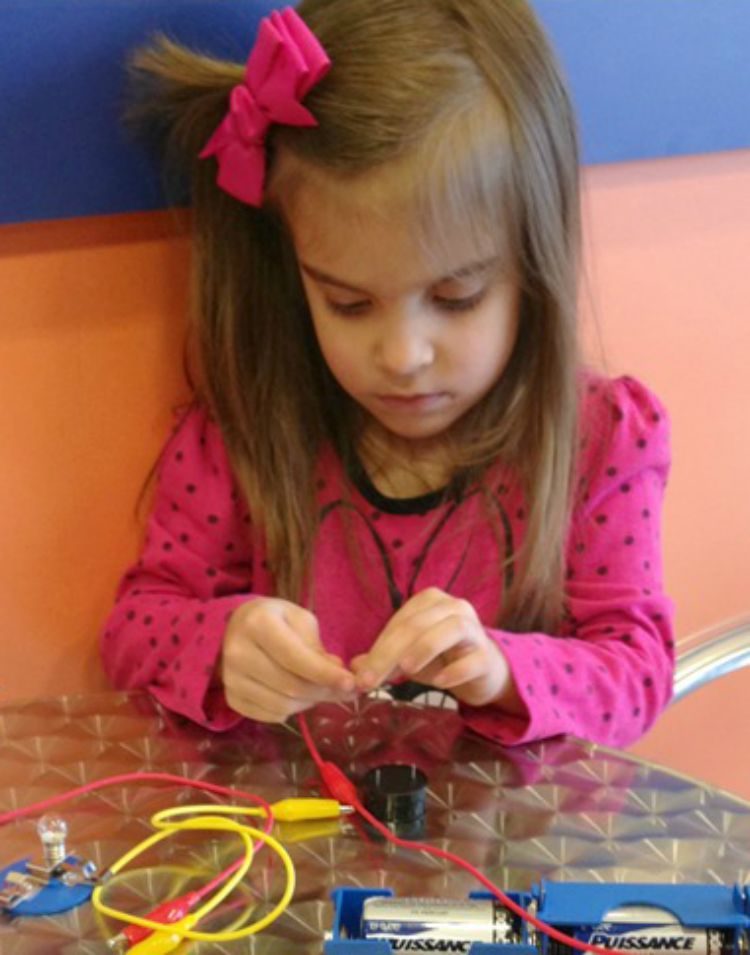Teaching Preschool at Home
Do you have preschool-aged kids? Are you struggling with what to do for the upcoming school year? Maybe you plan to homeschool, but aren’t sure exactly where to start, and worry that your kids will miss out on something by not going to a normal preschool… Maybe your kids are gifted — and asynchronous — and you know that they just won’t fit in at the local preschool.
You’re scared, overwhelmed, nervous.
Relax. Teaching preschool at home can be easy, rewarding, and one of the greatest things you can do for your child.
The fact is, you’re probably teaching your kiddo the things he or she would learn in preschool already, especially if you have a gifted child dragging you from museum, to science experiment, and over to your tinkering space for a little engineering.
Preschool at home can easily be fit into what you have already been doing with your children. They need to know some simple things: life skills, routines, and basic academics. There are lots of ways to integrate those three things into your day. And, honestly, I like to approach things with my kids from a better late than early standpoint. By this I mean that, while I won’t hold my kids back (indeed, my gifted kids won’t allow themselves to be stopped), I also won’t push in the early years.
Play, exploration, and discovery are their most important lessons when they’re young. It’s our job to spark that lifetime love of learning and get them excited about it during the preschool years.
Life skills
Learning to get along with others, following through on promises, obeying rules… these are important things to put in place before any kind of academics happen. If your child is struggling with heart issues, sending him to preschool may make those worse.
Before anything else is attempted, work on those things. Help your child get along with others. He can put away the silverware to help you in the kitchen. If the baby is crying, send him in the room a minute or two before you go in, and have him play peek a boo to try to calm her down for you.
Simple chores, family rules, and sibling love is important, and these are the skills that will grow your preschooler into a loving, compassionate adult.
Routines
Teaching your preschooler that there is a time and a place for everything can be tiring. It’s so much easier sometimes to just let him sleep in or put on another video.
Instead, remember that you’re raising a learner and leader. Have a set time to get up and start the day. Eat breakfast together and do some morning chores. Have loosely structured play and learning times, and make sure you plan for rest {or nap} times as well.
Having a routine doesn’t necessarily mean punching a clock, but it does mean giving your child something to look forward to. If breakfast just finished, and you always read together on the couch after you clean up the dishes, your child will come to look forward to that time together.
Building those little rituals starts with routine. And those rituals build closeness.
Academics
There are skills that most children will learn before they finish preschool, and they’re easily taught with a few simple school supplies and books from your local library. Children – especially preschoolers – learn by doing.
Play IS their job and education at this age. It’s important not to rush kids past this stage. Imaginative play is crucial to developing problem-solving and critical thinking skills.
You may wonder, though, what academic skills your preschooler should know by the time she is ready to head into kindergarten. By that time, your child should be able to:
- name the letters of the alphabet.
- sit and listen to a book.
- retell events from a favorite story.
- draw and write shapes and letters.
- write his first name.
- label drawings.
- tell a story through drawing and/or writing.
- sort objects.
- make simple patterns.
- name shapes.
- identify numerals 1-10.
- count to 20.
- speak clearly and in complete sentences.
- take turns talking.
- listen to and follow instructions.
- identify emotions and feelings.
- engage in activities for 15 minutes or more.
- follow rules.
- play well with others.
- hold pencils, crayons, and scissors properly.
Are you already working with your child on a lot of those things? See… you have nothing to worry about! Enjoy your kiddo, and learn, play, and discover together — you won’t regret this time spent.
You can do this – and will enrich your family so much by teaching your preschooler at home.
What do you think? For those of you who may have been in this place before, how did you integrate your child’s preschool learning into your already busy day? Leave me a comment with your ideas about preschool at home — I’d love to chat with you.
Then, check out my Raising Preschoolers board on Pinterest:







